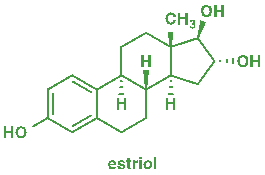Some steroidal estrogens and certain polyphenols may be a threat to aquatic ecosystems. These compounds, usually known as endocrine disrupting chemicals (EDCs) pollute our water inducing a potential ecological risk. They may be artificial waste products from chemical industries, but some are natural hormones excreted by cattle, poultry, or even humans. Some of them (like estriol or 4-nonyl-phenol) have been linked with very serious problems like decreasing fertility or causing feminisation in fish.
Thus, having a validated method to estimate the concentration of EDCs in water comes in handy, especially for the detection of these contaminants in the effluent of wastewater treatment plants. Treatment plants act as the last barrier before EDCs are permanently released in the environment.

A group of researchers from the Chinese Academy of Sciences has developed a new analytical method to determine the concentration of up to 12 different EDC contaminants. They have optimised an easy pretreatment that avoids enzymatic digestion of the samples, hence allowing for the first time the detection of the different EDCs conjugated salt forms (sulphate and glucuronide). As these EDC conjugates predominate in urine and faeces, having a method to analyse them effectively is useful to know the origin of these pollutants.
This particular analytical method uses state of the art ultra high performance chromatography (UPLC) and MS/MS detectors to improve limits of quantification to small amounts of EDCs down to 0.04 nanograms per litre. The experiments have determined that some species, like 17b-estradiol and all the glucuronide conjugates, are completely removed from wastewater after treatment.
Others, on the other hand, are only partially eliminated (removals may vary between 34 and 95% of the amount of EDC in the influent). The risk of not eliminating these contaminants from the effluent, ultimately released in the environment, has to be studied in depth.
Click on the link below to read the full article for free*:
Simultaneous detection of endocrine disrupting chemicals including conjugates in municipal wastewater and sludge with enhanced sample pretreatment and UPLC-MS/MS
Bing Zhu, Weiwei Ben, Xiangjuan Yuan, Yu Zhang, Min Yang and Zhimin Qiang
Environ. Sci.: Processes Impacts, 2015, Advance Article
DOI: 10.1039/C5EM00139K
—————-
Fernando Gomollon-Bel is a PhD Student at the ISQCH (CSIC–University of Zaragoza). His research focuses on asymmetric organic synthesis using sugars as chiral-pool starting materials towards the production of fungical transglycosidase inhibitors.
—————-
* Access is free until 24/08/2015 through a registered RSC account.












